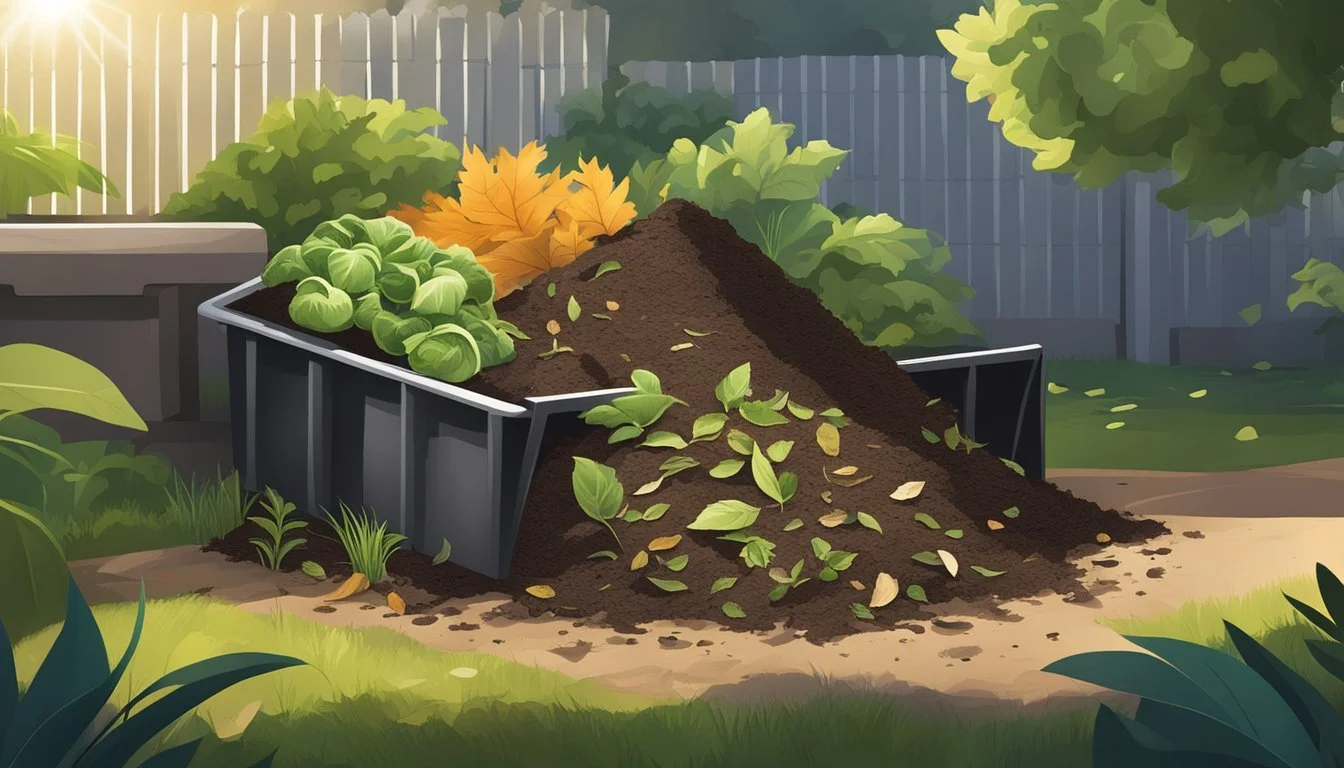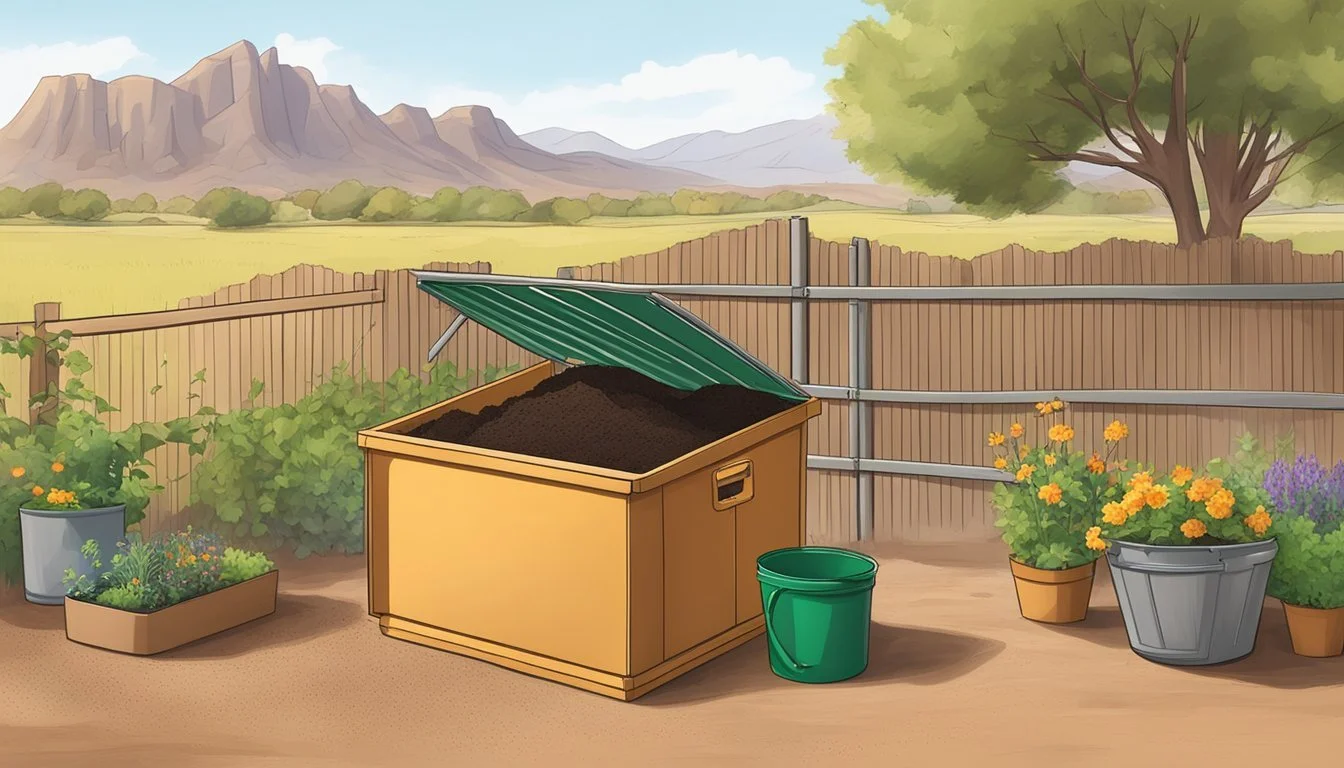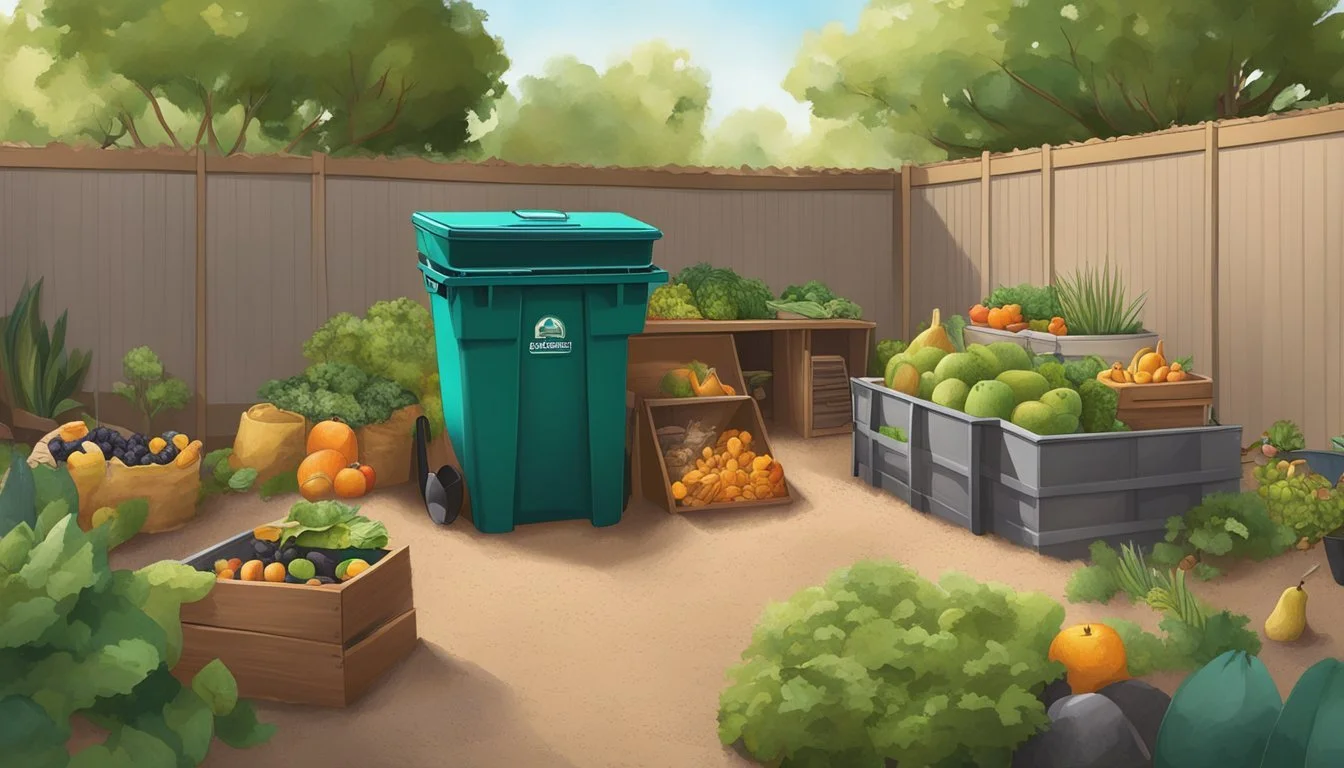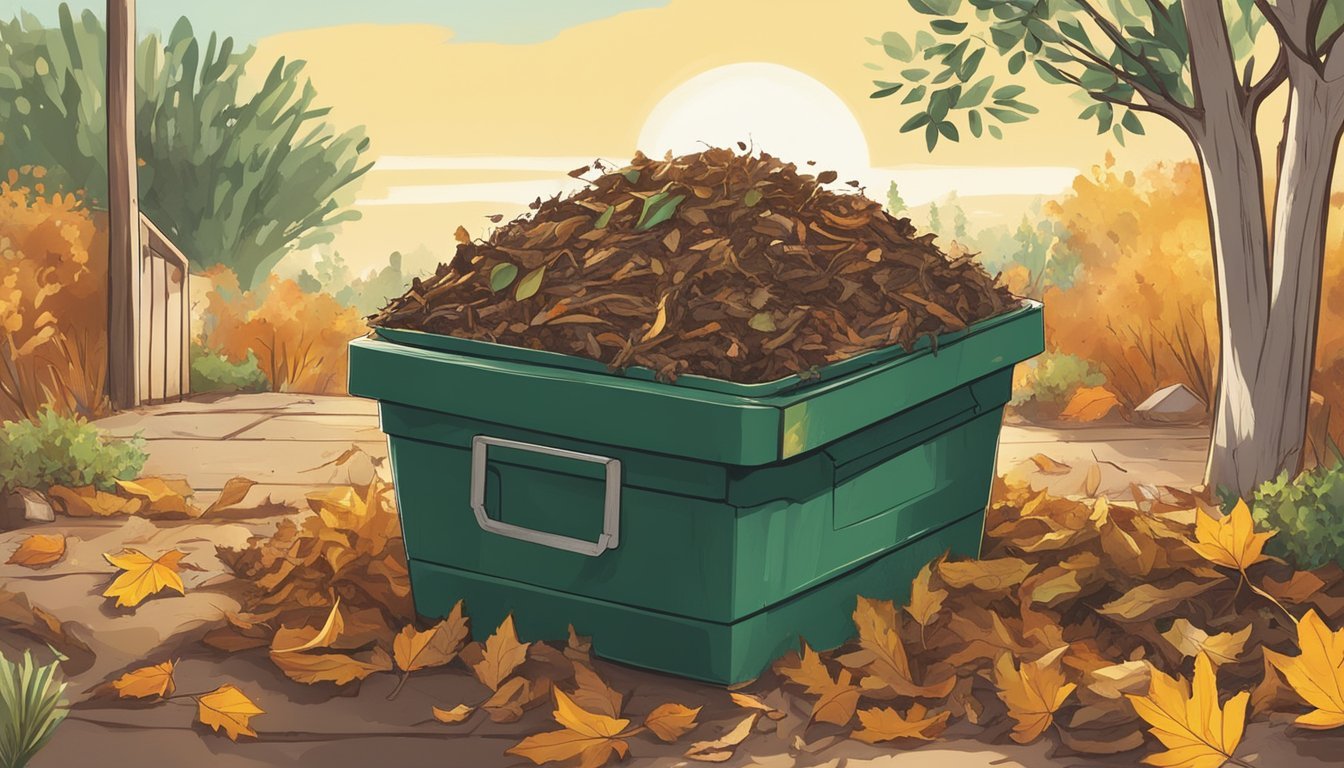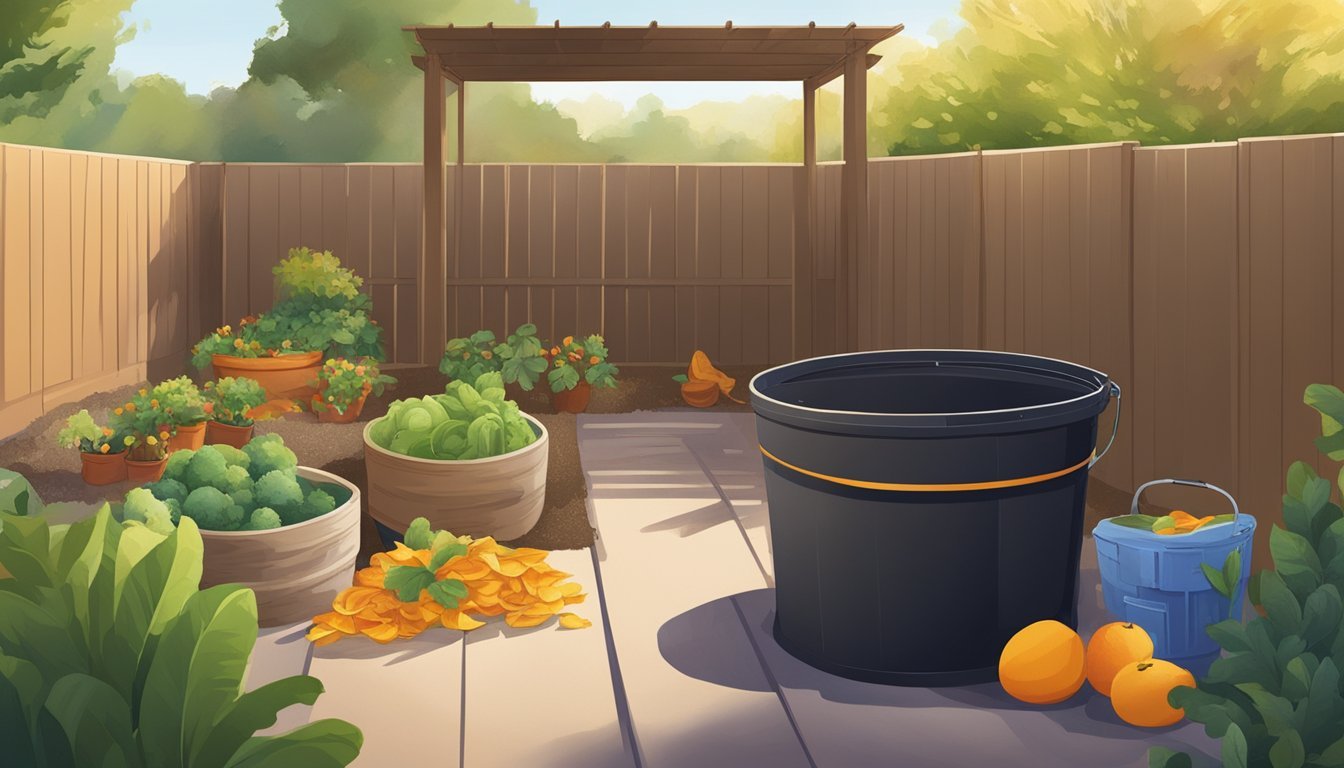Guide to Composting in Buckeye, AZ
Key Steps for Efficient Waste Reduction
Composting in Buckeye, Arizona, presents a unique opportunity for residents to engage in environmentally friendly practices right at home. Given the city's warm climate, composting is a practical method to recycle organic material such as kitchen scraps and yard trimmings. By converting these materials into nutrient-rich fertilizer, individuals not only reduce landfill waste but also enhance the quality of their garden soil, benefitting the local environment and preserving natural resources.
Understanding the nuances of composting in Arizona's arid conditions is essential. The process here may differ slightly from more humid regions due to the need to maintain optimal moisture levels without over-drying the compostable materials. Placing compost systems in shaded areas can prevent them from drying out excessively, making it important for residents to choose an appropriate location for their compost piles or bins.
Moreover, composting aligns with broader environmental goals by reducing methane emissions from organic materials in landfills and creating a sustainable loop of resources. As homeowners turn their organic refuse into valuable compost, they actively contribute to the health of their personal gardens and the vitality of Buckeye's desert ecosystem.
Basics of Composting
Mastering the basics of composting is essential for successful organic waste recycling in Buckeye, AZ. Starting with an understanding of the science, selecting an optimal location, and choosing a suitable composting method are fundamental steps.
The Science of Composting
Composting harnesses the natural process of decomposition, where microorganisms break down organic material like leaves, kitchen scraps, and garden trimmings. The result is compost, a nutrient-rich soil amendment. Aerobic composting relies on the presence of oxygen, while bokashi is an anaerobic process that ferments organic waste in a sealed container.
Choosing the Right Location
Finding the right spot for a compost pile or composting system is vital. It should be:
Easily accessible year-round
Close to the source of compostable materials
In contact with soil to allow microorganisms and insects to enter
Partially shaded to maintain moisture yet warm enough to facilitate decomposition
Composting Methods
Buckeye residents can choose from various composting methods, each suited to different needs and levels of involvement:
Hot composting accelerates decomposition, requiring regular turning to maintain aeration and temperatures between 135-160°F.
Vermicomposting uses earthworms to break down waste and is ideal for indoor composting.
Bokashi efficiently handles meat and dairy products, which are typically not recommended for other methods.
By incorporating food scraps, yard waste, and additional components like compost tea to maintain moisture, residents can transform waste into valuable compost to enrich their gardens.
Building Your Compost Pile
Creating a successful compost pile in Buckeye, AZ involves understanding what materials to include and avoid, and how to balance greens and browns to facilitate decomposition.
Materials to Include
One should include a mix of 'greens' such as vegetable scraps, fruit peelings, coffee grounds, and garden waste like grass clippings which provide nitrogen, and 'browns' such as dry leaves, straw, twigs, and cardboard, which offer carbon. Including a bit of soil can introduce beneficial worms and microorganisms to accelerate the process.
Greens:
Vegetable scraps
Fruit waste
Coffee grounds
Browns:
Dry leaves
Straw
Twigs
Cardboard
Materials to Avoid
Materials that should not be incorporated into a compost pile include meat, dairy, bones, and grease, as they can cause odors and attract pests. One must also avoid diseased plants, as they can transfer pathogens to compost that will be applied to the garden.
Avoid:
Meat
Dairy
Bones
Grease
Diseased plants
Creating the Perfect Balance
To achieve a nutrient-rich compost, it's critical to create the ideal balance between greens and browns. A general guideline is to maintain a ratio of approximately 2/3 browns to 1/3 greens by volume. This balance helps ensure that materials decompose effectively while minimizing odors. Water is essential as well, as a compost pile should be moist but not saturated to support the decomposing process.
Ratio:
2/3 Browns
1/3 Greens
Moisture:
Maintain dampness
Avoid waterlogging
For specific guidance on maintaining moisture in arid climates such as Buckeye, one can refer to Mastering the Art of Composting in Arizona. Properly maintained, this delicate balance of materials and moisture will result in a healthy and fertile compost pile, augmenting the nutrients in any Buckeye garden.
Maintenance of Compost
Proper maintenance is crucial to transform organic waste into nutrient-rich compost. A well-maintained compost pile promotes efficient decomposition, while reducing the potential for weed seeds and pathogens.
Aerating Your Pile
One can ensure proper air circulation within a compost pile by regularly turning it. This aerating process introduces oxygen, which is essential for the microorganisms that break down organic matter. An aerated pile decomposes faster, cutting down the overall time needed to produce compost.
Moisture and Temperature Control
Balancing moisture and temperature is key for speedy decomposition. The compost should feel like a wrung-out sponge—moist but not soggy. High temperatures in the pile signify that decomposition is occurring as it should. However, if it's too dry or too cold, the microbial activity slows down. Garden soil added to the compost can introduce microorganisms that help regulate these conditions.
When is Your Compost Ready
Compost is ready when it is dark, crumbly, and has an earthy smell. This usually takes anywhere from a few months to a year depending on maintenance and environmental factors. The presence of undecomposed weed seeds may indicate that the pile did not reach a high enough temperature or that it requires more time to process.
Using Compost in Your Garden
Properly integrating compost into your garden maximizes its benefits, enriching the soil and bolstering plant health. The key is to apply compost in a manner that supports plant and soil vitality.
Integrating Compost
When introducing compost into a garden, it should be spread uniformly over the garden beds. Depending on the need, a gardener can either work the compost into the top few inches of soil or use it as a mulch layer. For new garden beds, incorporating 3 to 4 inches of compost ensures the soil is well-amended before planting. For established gardens, mixing a 1 to 2-inch layer into the top layer of soil each season can greatly enhance soil quality. As a mulch, compost should be applied around existing plants to a depth of at least 2 inches, careful to avoid direct contact with plant stems.
Benefits for Plants and Soil
Compost acts as a soil conditioner, providing numerous benefits. It markedly improves soil structure, which promotes better root growth and increases the retention of water and nutrients. Plants in a compost-amended garden are more resilient and better nourished. This natural fertilizer introduces beneficial microorganisms and slowly releases essential nutrients, including nitrogen, phosphorus, and potassium, eliminating the need for chemical fertilizers. Utilizing compost as a mulch can also help to moderate soil temperatures and suppress weeds. Overall, compost is instrumental in creating a sustainable and nutritious environment for a home garden.
Troubleshooting Common Issues
In Buckeye, AZ, effective composting means addressing local challenges head-on. This section provides specific solutions for common issues such as managing odors, deterring pests and rodents, and ensuring materials decompose at an efficient rate.
Unpleasant Odors
Cause: Unpleasant odors often arise from an imbalance in the compost's carbon-to-nitrogen (C/N) ratio, or lack of sufficient airflow. A pile with too much nitrogen-rich green waste, like kitchen scraps, can become anaerobic and smelly.
Solution:
Adjust the C/N ratio by adding more carbon-rich brown materials, such as dry leaves, straw, or unprinted cardboard.
Turn the pile regularly to increase airflow and distribute moisture evenly.
Pests and Rodents
Cause: An open compost bin or unturned pile can become a haven for pests and rodents, drawn by exposed food scraps or the presence of insects.
Solution:
Use a compost bin with a secure lid and consider adding fine mesh netting at the bottom to prevent burrowing.
Regularly turn the compost to bury new additions and discourage pests from settling in.
Slow Decomposition
Cause: A variety of factors can slow down the decomposition process, including low temperatures, inadequate moisture, or poor balance of compostable materials.
Solution:
Ensure optimal decomposition by maintaining a balanced mix of green and brown materials.
In Arizona's dry conditions, monitor the moisture level to keep the compost damp, and cover it during hot periods to prevent excessive drying.
By addressing these common composting issues with targeted adjustments, residents in Buckeye, AZ can maintain a healthy and efficient composting system.
Advanced Topics in Composting
Going beyond basic composting methods, individuals in Buckeye, AZ seeking to maximize their composting efforts can utilize various specialized techniques to improve soil health and increase the efficiency of their composting practices.
Vermicomposting at Home
Vermicomposting harnesses the natural activity of worms, especially red wigglers, to break down organic waste into nutrient-rich compost. To set up a vermicomposting system at home, one needs a container, bedding material such as shredded newspaper, a population of composting worms, such as red wigglers, and appropriate manure or food scraps. The key is to maintain proper moisture, aeration, and avoid overfeeding, ensuring a thriving environment for the earthworms to efficiently decompose kitchen waste.
Bokashi: Fermenting Your Waste
Bokashi composting is a method involving the fermentation of organic waste, including items traditionally not recommended for regular composting, such as meats and dairy products. This process requires an airtight container and a special inoculant called Bokashi bran, which contains beneficial microbes that ferment the waste. Material is added in layers, compacted to remove air, and then the Bokashi bran is sprinkled on top. Once the bucket is full, it is sealed and left to ferment for a couple of weeks. The resulting matter can then be buried in soil to finish decomposing.
Hot Composting Techniques
Hot composting is a method designed to achieve higher temperatures through the careful management of the carbon-to-nitrogen ratio, aeration, and moisture levels, resulting in faster decomposition. A balanced blend of green (nitrogen-rich) and brown (carbon-rich) materials is essential for hot composting success. Turning the pile regularly maintains oxygen flow, and keeping it moist facilitates the activity of decomposing microbes. Hot composting can transform organic waste into ready-to-use compost in as little as 18 days under optimal conditions.
Community and Environmental Impact
Composting in Buckeye, Arizona, represents a significant movement towards sustainability, influencing both local communities and the environment through waste reduction and recycling initiatives.
Community Composting Initiatives
Buckeye's commitment to ecological well-being is evident in its support of community gardens that integrate composting practices. These gardens not only provide fresh produce but also serve as educational hubs where residents learn about composting and its benefits. For instance, the Phoenix Composting and Green Organics program accentuates the city's green initiatives and encourages community involvement in composting efforts.
Reducing Waste and Environmental Benefits
Implementing composting practices has a profound impact on reducing the amount of food waste funneled into landfills. By transforming organic waste into nutrient-rich soil amendments, Buckeye residents are actively cutting down methane emissions and conserving landfill space, leading to a healthier environment. Moreover, recycling organic material supports sustainability goals by returning valuable nutrients to the earth, as highlighted by the U.S. Environmental Protection Agency (EPA).
Composting Regulations in Arizona
In Arizona, composting activities are overseen by the Arizona Department of Environmental Quality (ADEQ), which issues notification approval for compost facilities to ensure they align with state environmental regulations. The Solid Waste - Composting regulation by ADEQ clearly states that composting should be done in accordance with all relevant laws, thus safeguarding both public health and the environment. This structured approach ensures that composting practices are not only beneficial but also legally sound and environmentally responsible.
Resources for Buckeye Residents
Residents of Buckeye, Arizona, have access to supportive services aimed at fostering sustainable waste management practices through composting. The available resources not only help in reducing landfill emissions but also enrich the soil in this arid region.
Local Composting Programs
Buckeye provides residents with a variety of community gardens where they can participate in and learn about composting firsthand. Initiatives like the City of Buckeye's Trash and Recycling also include aspects of waste diversion, such as composting, to help reduce the impact on landfills. Additionally, the municipality sometimes offers free compost for local gardens, which promotes the use of organic matter in gardening and landscaping.
Educational Workshops and Master Gardener Advice
Educational opportunities for composting are abundant. Through the University of Arizona Cooperative Extension, they can attend educational workshops that teach the principles of effective composting. The extension's Master Gardener program offers residents a chance to receive guidance from experienced gardeners who have in-depth knowledge of composting in Arizona's unique climate. These gardeners help clarify the composting process and how it can be tailored to individual needs and environmental conditions in Buckeye.
Composting Beyond the Garden
Composting isn't limited to those with a green thumb; it's a sustainable practice that extends to non-gardeners and leverages innovative techniques to contribute to soil transformation.
Home Composting for Non-gardeners
Non-gardeners can participate in composting by collecting kitchen scraps such as fruit and vegetable peels, coffee grounds, loose tea leaves, eggshells, and even shredded newspaper or cardboard. A compost bin placed in a convenient location like a kitchen corner allows for easy disposal of organic waste. This bin acts as a receptacle for daily contributions, which, over time, decompose into a nutrient-rich material. Not only does this process reduce landfill waste, but it also creates a valuable product that can be donated to local community gardens or used in public landscaping projects.
Acceptable Compostable Items:
Fruit and vegetable scraps
Coffee grounds and filters
Tea bags (without plastic) and loose tea leaves
Eggshells
Shredded newspaper and uncoated cardboard
Steps for In-Home Composting:
Choose an appropriate indoor compost bin with a tight-fitting lid.
Regularly add your collected compostable materials.
Mix or turn the contents periodically to aid decomposition.
Once matured, use the compost for non-edible projects or donate it.
Innovations in Composting
The field of composting is seeing innovations that push the boundaries of traditional composting methods. One such cutting-edge practice is human composting or natural organic reduction, which is a process that gently converts human remains into soil-building compost, facilitating a return to the earth in an ecological manner. This method of composting is a profound step in eco-friendly practices, allowing individuals to lessen their environmental impact even after life. Additionally, innovations in compost bins are making the process more convenient and less odorous, encouraging wider adoption among those who may not have previously considered it.
Conclusion
Composting in Buckeye, AZ is not only a practical choice for waste management but also an impactful step towards environmental sustainability. It transforms organic kitchen and yard waste into nutrient-rich soil conditioner, enhancing the nutrition and health of home gardens.
Residents have access to helpful resources such as the ADEQ Compost Guide and the Phoenix Composting and Green Organics Program, which support their composting journey. By following expert advice, such as balancing brown and green materials and adding adequate moisture, individuals can master the art of composting even in arid climates.
List of composting benefits:
Reduction in landfill waste
Improved soil quality for gardens
Conservation of natural resources
Decrease in greenhouse gas emissions
By embracing composting, Buckeye's community members contribute to a healthier environment and a sustainable future. The practice not only nurtures home gardens but also fosters a community-wide commitment to ecological responsibility.


